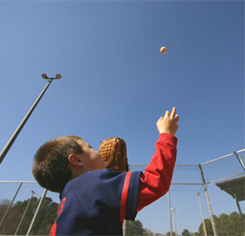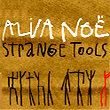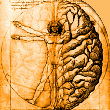Friday, 10 February 2017
You Don’t Catch a Ball by Calculating Its Trajectory, You Catch It by Moving

Today I’d like to talk about a problem that is a classic both for baseball players and for cognitive scientists. And the way that baseball players solve it has helped cognitive scientists to better understand the important role that the body plays in cognition.
The problem is as follows: how does a baseball player go about catching a baseball that has been hit high into the air, especially when the player is in centre field and the ball is following a long, parabolic trajectory that would otherwise cause it to land several metres from where the player is standing? How does the player go about calculating this trajectory and moving, in just a few seconds, to the right place to catch the ball? This is what has long been known in English as “the outfielder problem.” (If you’re more of a soccer fan, imagine a backfielder successfully heading a long throw-in by the goalkeeper.) (more…)
Body Movement and the Brain | No comments
Monday, 10 September 2012
Why You Are Not Just Your Brain
 In the introduction to their 1991 book The Embodied Mind, Francisco Varela, Evan Thompson, and Eleanor Rosch noted that as of that writing, the cognitive sciences had little to say about what it means to be human in the concrete situations of everyday life. This criticism was aimed directly at the prevailing paradigm, according to which the human brain worked somewhat like a computer, with input, information processing, symbolic representation, output, and so on.
In the introduction to their 1991 book The Embodied Mind, Francisco Varela, Evan Thompson, and Eleanor Rosch noted that as of that writing, the cognitive sciences had little to say about what it means to be human in the concrete situations of everyday life. This criticism was aimed directly at the prevailing paradigm, according to which the human brain worked somewhat like a computer, with input, information processing, symbolic representation, output, and so on.
In contrast, the approach proposed by Varela and his colleagues, to which they gave the name “enaction”, emphasizes how much our reasoning depends on our bodies and on the environmental context in which they are situated. (more…)
Body Movement and the Brain, The Emergence of Consciousness | Comments Closed
Monday, 9 July 2012
Embodied Cognition and Emotions
 Expressions such as “receiving a warm welcome” and “giving someone the cold shoulder” seem to be rooted deep in our bodily experience, or at least, that is the conclusion increasingly suggested by studies on embodied cognition, a field first developed in the 1990s by researchers such as Francisco Varela.* (more…)
Expressions such as “receiving a warm welcome” and “giving someone the cold shoulder” seem to be rooted deep in our bodily experience, or at least, that is the conclusion increasingly suggested by studies on embodied cognition, a field first developed in the 1990s by researchers such as Francisco Varela.* (more…)
Emotions and the Brain, From Thought to Language | 3 comments »







